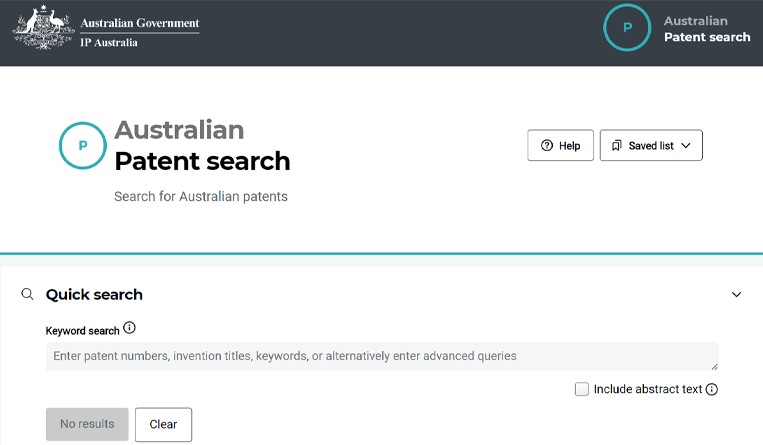IP Australia launches new patent search tool
05 April 2024

Photo: IP Australia

Frazer McLennan, Patent Information Professional, Spruson & Ferguson, Sydney
IP Australia launched a new patent search tool on March 20, 2024. The platform called the Australian Patent Search (APS) is currently up and running simultaneously with its older counterpart, the AusPat search tool, which has been in use since the mid-2000s.
APS, which boasts a more modern interface, is set to completely replace AusPat before 2024 ends.
Like AusPat, APS provides Quick search and Structured search features. “Boolean search strings can be entered in the Quick search field, which perhaps explains why AusPat’s Advanced search functionality is missing from APS,” said Frazer McLennan, patent information professional at Spruson & Ferguson in Sydney.
As with AusPat, one can customize the columns in the search results, and the number of results is calculated without having to conduct the search.
“One of the notable improvements in APS is that it allows you to download your search output in .csv format, capturing all relevant data points. The corresponding data are very difficult to download via AusPat,” said Gareth Dixon, principal at Spruson & Ferguson in Sydney.
Another improvement has been made to the Help function. Unlike AusPat’s Help feature, which is situated only at the bottom of the page, the new patent search platform has its Help functionality both at the upper and bottom portions of the page. Greater visibility of the Help feature allows more users, especially first-time users of the search tool, to get the assistance they need in a timely manner.
Another feature shared by both platforms that has been upgraded in APS is its Saved list, the counterpart of AusPat’s MyList function. MyList can hold up to 300 records for a day or so, after which these records will all disappear. In contrast, the Saved list can hold more than 500 applications.
However, McLennan has some reservations. “I thought it might have been the next step, but it’s all irrelevant now that it’s possible to download all the results as a .csv. It has much more utility in being able to save your searches for a longer time than previously possible,” he reasoned.
Another concern, Dixon and McLennan pointed out, involves the variations of names that emerge from a patent search. In AusPat’s Advanced Search page, users may search for names of applicants and inventors just by typing a few letters of the name. Search results will include all variations of the name contained in the patent search platform’s dataset. One example is the Commonwealth Scientific and Industrial Research Organisation. AusPat’s dataset contains 53 variations of the name.
“It was very helpful when it came to conducting name searches. Now, you’re on your own,” said Dixon.
McLennan explained further: “Perhaps some of this is occurring in the background now. If I type in ‘commonwealth scientific’ into the Quick search in APS, the results show a similar – but not the same – number to selecting all the variations in AusPat, and those individual variations are still providing results if you look specifically for them. Call me old school, but I want to do that for myself, not rely on some ambiguous AI tool. Perhaps IP Australia could provide the option to be given all the name variations.”
The two also observed there are at least six different font sizes on the landing page. There are more after conducting a search, plus a bunch of different fonts. “If you look at an individual record, field names and the information are a distinct mismatch, and little information is actually shown on the screen. Resizing the screen leads to losing crucial information. A better balance is required,” McLennan suggested.
Page numbers are another issue of concern. In AusPat, Next/Prev/Page numbers are seen at the top and bottom of the search results page. In APS, these are found only at the bottom of the page.
Ditto with APS having bookmarked sections as opposed to AusPat’s dropdown fields and sections. According to McLennan, bookmarked sections offer a faster way to find information. “But it also stops you from having information from two of those sections in view at the same time, and sometimes that’s necessary,” he revealed. “The alternatives are to print, which provides everything on one page, or download the .csv, which doesn’t have all the available information.”
Dixon added that APS does not indicate whether subscriptions or notifications registered under AusPat will carry through to APS. Hence, they suggest that users register with APS as well.
“There are still a few bugs, and no timeframe for a fix as yet,” he added.
Overall, early indications where the new patent search tool is concerned are “pretty positive,” according to Dixon. “Like anything, the new look and feel of APS will take some getting used to,” he said. “Hopefully, by the time AusPat is decommissioned, APS will feel like ‘home.’”
- Espie Angelica A. de Leon






